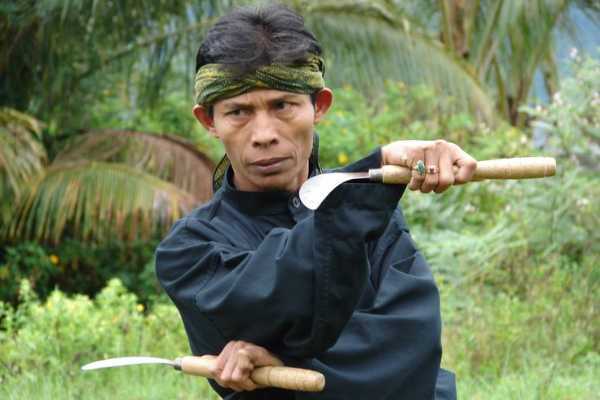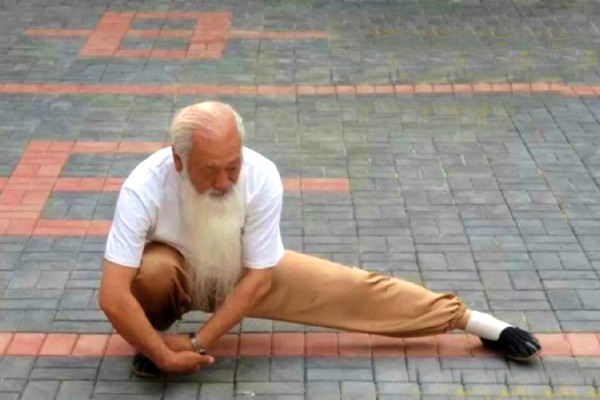If you can learn how to be gentle and strong, you will become the master of self-awareness and self-control. These are skills worth mastering. Self-awareness and self-control are the keys to balancing gentleness and strength.
You may never totally master a skill, but that doesn’t mean you can’t get a little closer. It’s about being better today than yesterday, but it also means learning to be kind to yourself. You will have good days and bad days.
Kindness is the first step towards strength with tenderness. Kindness starts with being good to ourselves, which means adding self-care to our routine. It isn’t easy to help others when you are in need. True strength is based on compassion and empathy. These virtues will give you a sound foundation for a happy, positive life.
Skills Worth Mastering
Being both soft and strong is a combination very few have mastered. — Yasmin Mogahed
Skills that are worth your time to master are often those that are subtle yet powerful. You may never be a grandmaster, but you get better at anything if you apply time and effort. It is the small victories that bring us closer to our personal goals. The journey to mastery involves progressing through several stages of development.
An Apprentice or Novice, is learning the fundamentals and basics. The Journeyman is flourishing and has a strong foundation of the skills essential for success. Next is the Guru Muda. They are well versed practitioners and able to coach and teach others effectively. A Guru Tuhan Master represents the mastery of the subject matter with a deep understanding of the system and how to convey it.
The path of mastering something is the combination of not only doing the best you can do at it but also doing it the best it can be done. — Gary W. Keller
Perfection is not attainable, but if we chase perfection we can catch excellence. — Vince Lombardi
Being Both Soft And Strong is the Goal
Some people are naturally better at being strong, and some are better at being soft—work at being well-rounded. Challenge yourself, but above all, be patient with yourself.
What people call soft skills are the core critical thinking and learning skills. These skills affect every aspect of our lives. The “hard skills” are the technical abilities and knowledge we use with the soft skills. For example, lawyers and doctors use their soft skills to practice the hard skills of their professions.
— Abstract Thinking.
— Adaptability.
— Analytical Thinking Abilities.
— Attention Control.
— Deal with Ambiguity.
— Fundamental Learning Skills.
— Enhanced Memory.
— Goal Setting and Planning.
— Inhibition Control.
— Interpersonal Communication Skills.
— Self and Social Awareness.
These skill sets can be hard to learn because our culture focuses on the data rather than the skills needed to use the data. You can create your own core skills learning program; follow the link and see how. We’ll look at balancing gentleness and strength.
How to Be Gentle and Strong
Being both soft and strong requires mastery of basic social and learning skills. As children, we needed to learn some basic skills in order to be successful. We needed to learn how to communicate, show empathy, and be kind so that we could share and play with others and control our emotions. You can spot the adults who failed to learn these lessons. These are the people who are selfish and greedy.
If you do not learn these basic social skills, it affects your ability to function in the world. You can, however, correct any of these deficiencies if you apply yourself.
The Wisdom of Patience
If you are to become a master of any skill, you need patience. Our modern world prioritizes immediate gratification. The patience required for waiting for a webpage to load is measured in milliseconds. You’ll need to remember the day when a dial-up modem took several minutes, and we were happy if it worked at all. We invented many new cuss word combinations during those good old days. But that’s the kind of patience you need today when dealing with navigating automated phone systems.
Patience requires one to learn to be both soft and strong. We must be strong-willed to remain focused yet not allow emotions like frustration to interfere.
A man who is a master of patience is master of everything else. — George Savile
It takes courage to follow the path of gentleness, which is the Eastern quality of Yin. The journey requires us to resist negative emotions like anger or self-pity. To do this, you’ll need to engage the power of your will. You’ll also need to assess your spiritual path and make the necessary changes honestly.
Most of all, you’ll need patience. So, learn to be easy on yourself, yet hold yourself accountable. Personal development requires balancing gentleness and strength. For example, losing weight means learning portion control. It’s not easy. So, you must not be too harsh on yourself when you don’t stay within your target calories. At the same time, challenge yourself to do better tomorrow.
Learn to be present so you’ll spot your emotions sooner when you become frustrated and angry. When you acknowledge your feelings, you have the power to change them. The first thing most people notice is that it feels terrible. So why do we stay frustrated for so long? because we don’t realize we have the power to stop it.
We recommend a simple emotional check-in process to help you regain emotional equilibrium. Focusing on breathing and a comfortable posture takes the force away from frustration. Here’s a short version with an acronym to help you remember: STOP.
S — Stop and remember, you have the power to control things.
T — Take a deep breath and focus on sitting straight but comfortably.
O — Observe your thoughts and emotions. How do they make you feel?
P — Place your awareness on breathing and body awareness and remain in control.
The act of catching yourself in the act is a sign of self-awareness. This will help train your mind to be gentle and strong. Breathing deeply helps you regain and control your emotional equilibrium. When you have emotional control, you can observe your thoughts while still in activity. When your mind tries to bring up the source of the frustration, bring your mind back to the practice.
Tools For Balancing Gentleness and Strength
Being both soft and strong is necessary for inner work. For instance, you must learn to be gentle when examining your faults. Then, we need to be strong enough to push through the negative inertia that keeps us from making the changes we want. It takes strength and vulnerability to examine our beliefs and face our fears.
Many top athletes talk about “moving effortlessly” when they find the grove. They describe it as an inner silence or stillness. Alternating movement and stillness is definitely a skill worth mastering.
Our inner critic can overpower our thinking processes. When we use self-love and self-forgiveness, the inner critical voice is silent. So, we find acceptance not by strength but through gentleness. Instead of condemnation and judgment, we “feel” the peace of forgiveness. In return, this strengthens us. We chose the path of gentleness, and this makes us strong.
Several things seem opposite but are complementary elements on the same continuum. For instance, martial arts and silent meditation seem like opposites, but they are the same path elements.
The body benefits from movement, and the mind benefits from stillness. — Sakyong Mipham
Yin and Yang in Martial Arts: Skills Worth Mastering

In the arena of internal martial arts, learning how to be gentle and strong is fundamental still. It relates to the balancing gentleness and strength, the mental and physical aspects of the art. These are the ultimate skills of self-control. You seem to be weak because you do not oppose the force of your opponent directly. Instead, you redirect their energy for your benefit. You learn to do this by dancing with your opponent. To do this, you must learn how to control the automatic reflexes of your nervous system.
The Sympathetic Nervous (SN) system takes charge when something threatens our physical safety. It’s the nervous system’s default setting. This automatic reaction is the “fight, flight, or freeze” response of our primitive monkey brain. It increases adrenalin and several other powerful enzymes.
SN helps us react quickly and respond less to pain, but it also creates a problem. These chemicals are damaging to the higher thinking centers, so the brain shuts off blood flow to them. So, we are fast, but only at a primitive level of intelligence. Sometimes, I think many people get stuck here, but that’s a different topic.
The fight-and-flight response helps us move faster. However, we lack the higher thinking centers that enable split-second decision-making and movement. We need these higher brain functions to process information in a rapidly changing situation like combat.
Everybody has a plan until they get punched in the mouth. Then, like a rat, they stop in fear and freeze. — Mike Tyson
It is why martial artists train to engage the parasympathetic nervous system. They learn to override the automatic engagement of the sympathetic nervous system. Learning to control your emotions is one of the top skills worth mastering. On the surface, this seems counterintuitive. However, we want to engage the parasympathetic nervous system to use the higher thinking capability. The ability to reason and act correctly is what you need in this life-threatening situation.
Now, they can make split-second decisions that were impossible with SN in control. Being both soft and strong makes it possible to overcome the stronger opponent.
So, with the proper training, you can be fluid. It hides your skills and inner strength. You appear as an easy opponent. By the time the opponent realizes the mistake, it is too late. They are the victim of their faulty assessment of your actual ability. With the Parasympathetic in charge, you can move the right way at the right time.
When we learn how to be gentle and strong, we take control of our emotions. This skill allows us to access the higher-thinking center of the mind while dealing with conflict.
Water is fluid, soft, and yielding. But water will wear away rock, which is rigid and cannot yield. As a rule, whatever is fluid, soft, and yielding will overcome whatever is rigid and hard. This is another paradox: what is soft is strong. ― Lao Tzu
The Art of Balancing Gentleness and Strength

The gentle approach cultivates trust and social strength. When you cultivate gentleness, you also promote kindness. If you do this, it will become a part of your character. It doesn’t mean you’ll always have a sunny disposition, but it will make you more approachable. Enhancing “hard, soft skills” cultivates empathy and compassion.
The brutal approach is stereotypical Drill Sargent or Pro-Football coach. Here, the need for immediate performance is short-lived. Coaches with the most winning careers are those perceived as inspirational, like Tom Landry and Vince Lombardy.
The idea behind gentle learning is to build trusting relationships. People learn more quickly when they feel safe making mistakes rather than being punished.
Being approachable is another cornerstone of leadership. But cultivating a soft heart means caring for people and not just focusing on what they can produce. People who are aware will notice the difference between genuine interest and manipulation for gain.
Alternating Silence with Action
Almost every form of seated meditation has a reciprocal moving aspect. Many ancient practices contain both silence and movement. The Shamanic Journey and many of the healing arts are examples. Select two complementary spiritual tools. Make them skills worth mastering. Here are examples of alternating between rest and activity:
1. Pranayama (breathing exercises) followed by any type of meditation.
2. Meditate for 20 minutes, then light stretch and Yoga for 20 minutes.
3. After 20 minutes of Yoga, spend 20 minutes journaling.
4. Practice 20 minutes of moving meditation, like Tai Chi, followed by 20 minutes of meditation.
Conclusions on Balancing Gentleness and Strength
If you learn how to be gentle and strong, you will become more self-aware and in control of your thinking and emotions. It’s important to balance the traits of strength and gentleness. You might not master them completely, but you can always try to improve and be better. Remember to be kind to yourself because everyone has good and bad days.
It is all about practice and patience, two fundamental skills worth mastering. Pick something you want to be more balanced, and it will likely require mastering.
Balance is about maintaining stability and control. It involves physical, spiritual, and mental aspects. Physically, it means keeping your body steady, like when riding a bike or standing on one foot.
Spiritual balance is finding harmony with yourself even when things are chaotic. It means aligning your actions with the higher virtues of the spirit.
Mentally, it means managing emotions and thoughts. This helps us stay calm under pressure and make accurate decisions. Balancing gentleness and strength helps us navigate life’s ups and downs. It’s finding the right mix of strength and gentleness to handle challenges.
